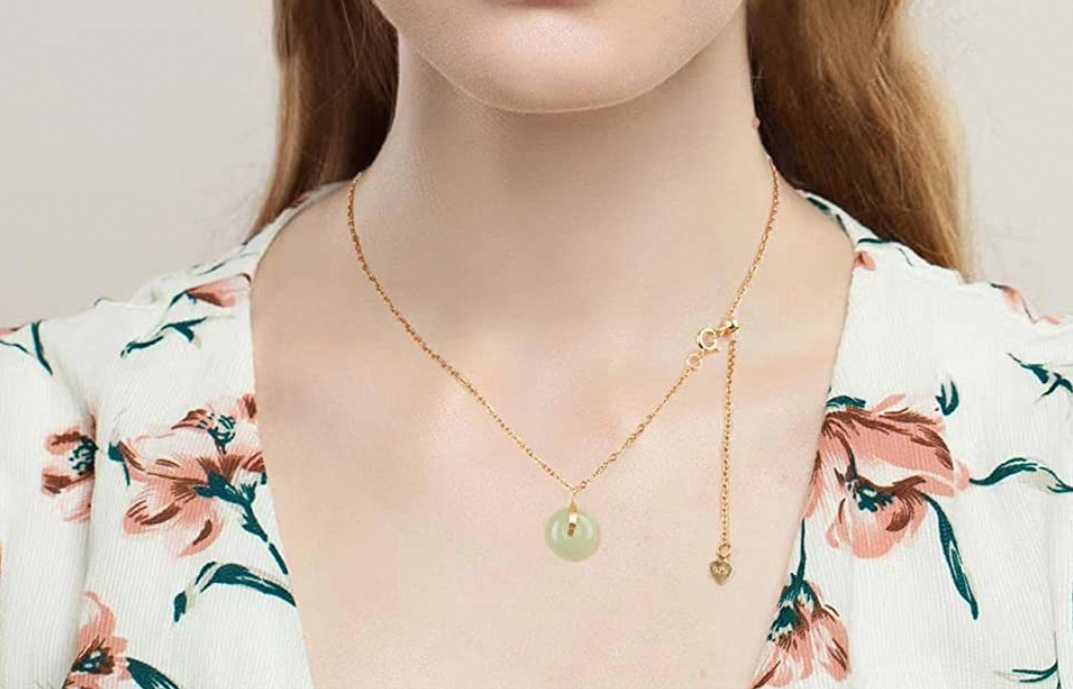Jade necklaces have a rich and fascinating history that dates back thousands of years. Throughout the centuries, jade has been used in jewelry, art, and even weaponry. In this article, we’ll take a deep dive into the history of jade necklaces and explore their significance in different cultures and time periods.
Jade in Ancient Times
Jade has been used in jewelry and art since ancient times. In China, jade was considered to be the “imperial gem” and was highly valued for its beauty and symbolic significance. Jade was also used by the Maya and Aztecs in Central America for jewelry and religious artifacts.
In ancient China, jade necklaces were worn by both men and women and were often given as gifts to express love and affection. Jade was also believed to have protective qualities and was worn as a talisman to ward off evil spirits.
Jade was also used in ancient Egypt, where it was considered to be a symbol of fertility and protection. Jade was often carved into amulets and necklaces and was believed to bring good luck and protect the wearer from harm.

Jade in Modern History
In the 19th and 20th centuries, jade became increasingly popular in Western fashion. Jade jewelry was seen as exotic and luxurious, and was worn by high society women in Europe and the United States.
In the Art Deco era of the 1920s and 30s, jade was often combined with other precious gemstones and metals to create bold and sophisticated jewelry. Jade necklaces were also worn by Hollywood actresses, such as Greta Garbo and Marlene Dietrich, who helped to popularize the stone in the United States.
By the 1960s and 70s, jade jewelry had become a symbol of the counterculture movement. Jade necklaces were often worn as a statement of rebellion against mainstream fashion and culture.
Jade Necklaces in Modern Fashion
Today, jade necklaces are still popular in both Eastern and Western fashion. In China, jade remains a highly valued and respected gemstone, and jade necklaces are often worn to celebrate special occasions such as weddings and birthdays.
In Western fashion, jade necklaces are often paired with other gemstones and metals to create unique and personalized pieces. Jade is also often used in bohemian and naturalist fashion, where it is paired with natural materials such as leather and wood.
In recent years, jade has also gained popularity in the wellness and healing community. Jade is believed to have soothing and calming qualities and is often used in meditation and healing practices.
The Symbolism of Jade Necklaces in Different Cultures
In addition to being valued for its beauty and healing properties, jade also has deep symbolic significance in different cultures around the world. Understanding the symbolism of jade can help to add a greater level of meaning and significance to your jade necklace.
In Chinese culture, jade is believed to represent purity, beauty, and immortality. Jade was often used in royal and imperial ceremonies and was considered to be a symbol of power and wealth. In Chinese mythology, jade was also believed to have the power to protect and heal the body, mind, and spirit.
In ancient Mayan culture, jade was also highly valued and had strong religious and spiritual significance. Jade was believed to represent the life force and was often used in religious rituals and ceremonies.
In New Zealand Maori culture, jade (known as “pounamu”) is considered to be a sacred stone and is believed to hold great spiritual power. Jade is often carved into intricate designs and worn as a symbol of status and protection.
Wrap-up
Jade necklaces have a long and fascinating history that spans centuries and cultures. From ancient China to modern fashion, jade has been valued for its beauty, symbolism, and healing properties. Whether you’re wearing a jade necklace for its cultural significance, as a fashion statement, or for its healing properties, there’s no denying the timeless appeal and enduring popularity of this precious gemstone.